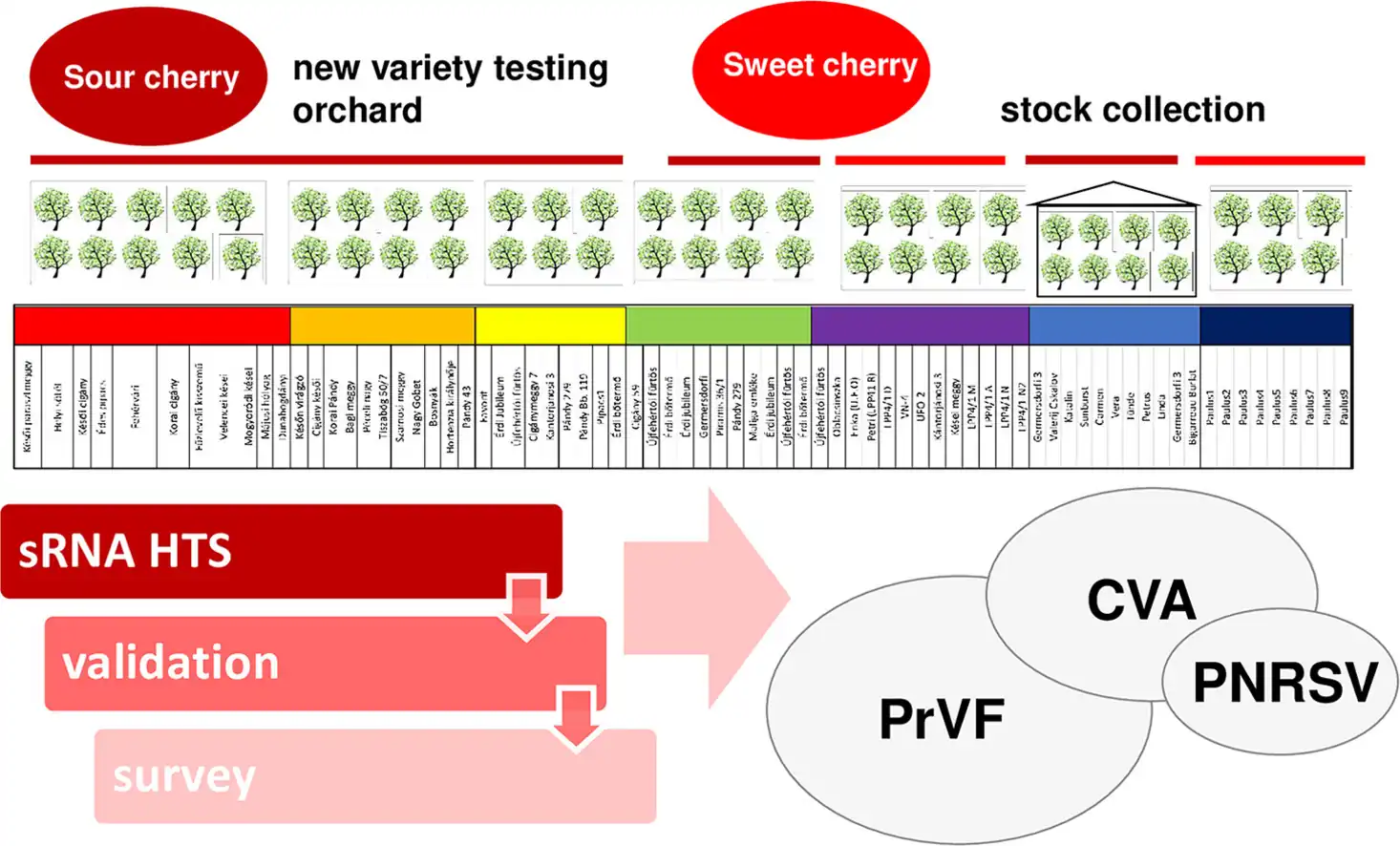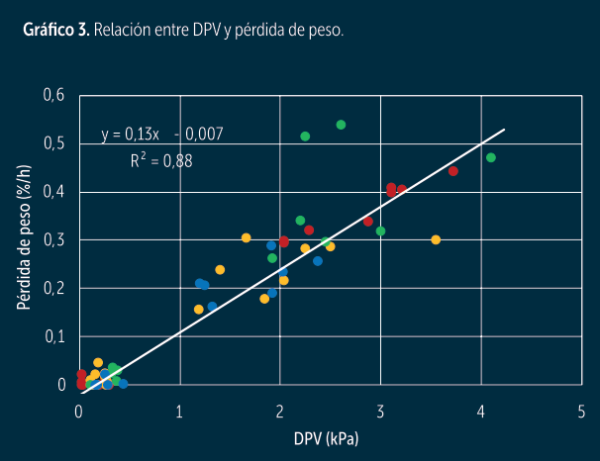Viral infections pose a significant threat to the health and productivity of sour cherry trees (Prunus cerasus). These viruses can affect not only the leaves and fruits but also the trunk, compromising the plant’s vascular system and causing a progressive decline that, in severe cases, may lead to the death of the tree due to disrupted water and nutrient transport.
Since there are currently no effective cures against plant viruses and viroids, prevention remains the only viable strategy. Certification programs play a key role by ensuring the production of virus-free rootstocks and cultivars through strict protocols that mandate the detection and exclusion of economically important viruses from foundation collections.
Given that sour cherry orchards typically use plants propagated vegetatively, it is essential to employ certified virus-free propagation material. The EPPO protocol PM 4/29 establishes a list of 15 regulated viruses for the certification of sweet and sour cherry, but only 11 have been confirmed as pathogens of sour cherry.
Virus regulation and impact
These include, for example, Apple Chlorotic Leaf Spot Virus (ACLSV), Little Cherry Virus 1 and 2 (LChV-1 and LChV-2), and Tomato Black Ring Virus (TBRV). Other viruses listed have not been detected in sour cherry nor are recorded in genetic databases such as GenBank.
A virus of particular interest is the Prunus Necrotic Ringspot Virus (PNRSV), which is considered a non-quarantine pathogen in Europe but a quarantine pest in Asia, America, and Egypt. This virus can infect several species, including hop, roses, and raspberries.
In Europe, its spread is contained through a voluntary certification scheme. Cherry Virus A (CVA) has been included in Israel’s quarantine list since 2009, due to its transmission only by grafting and lack of visible symptoms.

Monitoring and research efforts
Similarly, Prunus Virus F (PrVF) is not regulated, partly because of limited evidence on its distribution and pathogenicity. In Hungary, a country with a long tradition in sour cherry cultivation, clonal selection has recently been replaced by classical breeding for new cultivars.
Researchers investigated the viral status of plants in an experimental orchard and a certified mother plant field. Leaf samples were analyzed using high-throughput RNA sequencing (HTS) to assess viral infections. This revealed a high incidence of CVA and PrVF but no PNRSV in the certified stock collection.
However, PNRSV was later detected in the experimental orchard, likely transmitted via pollen. The sequencing technique proved useful for general virome detection but was less effective for specific virus diagnosis.
Future considerations
Preventing the spread of PNRSV in experimental orchards is crucial, as it may interfere with the phenotypic evaluation of new cultivars. Although CVA and PrVF do not appear to affect fruit yield or tree health, the possible impact of mixed infections under climate change remains an open question, deserving further study to inform regulatory measures.
Source: Francesco Desiderio, Zsuzsanna Nagyné Galbács, Emese Demian, Vivien Fákó, David Czako, Tünde Varga, Daniel Barath, Nikoletta Jaksa-Czotter, Igor Koloniuk, Eva Varallyay, Sweet and sour cherry trees growing at new cultivar testing orchard and certified stock collection in Hungary are highly infected with CVA and PrVF, Scientia Horticulturae, Volume 338, 2024, 113820, ISSN 0304-4238, https://doi.org/10.1016/j.scienta.2024.113820
Opening image source: Borisova et al., 2021
Internal image source: Desiderio et al., 2024
Melissa Venturi
University of Bologna (ITA)
Cherry Times - All rights reserved













